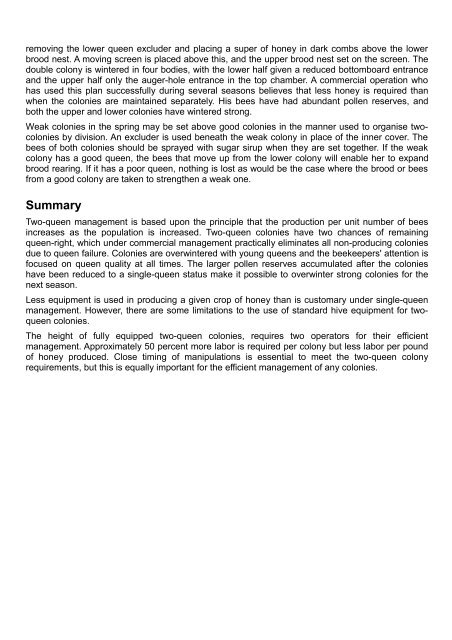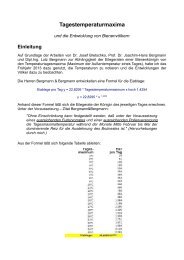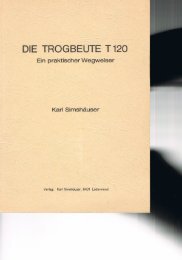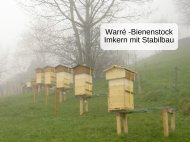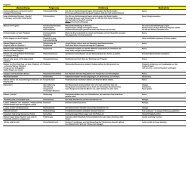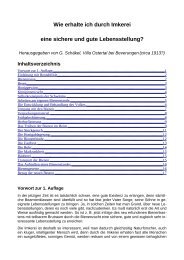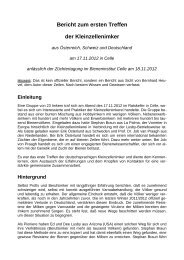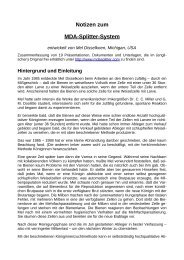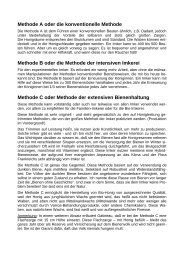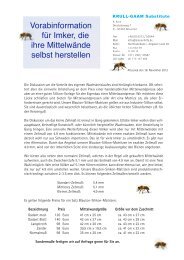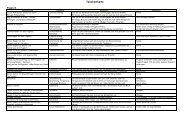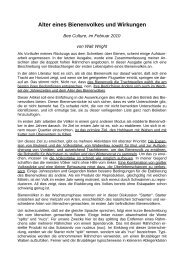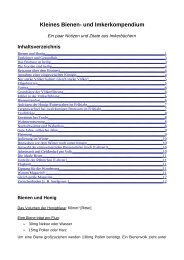Two-queen colony management - Immenfreunde
Two-queen colony management - Immenfreunde
Two-queen colony management - Immenfreunde
You also want an ePaper? Increase the reach of your titles
YUMPU automatically turns print PDFs into web optimized ePapers that Google loves.
emoving the lower <strong>queen</strong> excluder and placing a super of honey in dark combs above the lower<br />
brood nest. A moving screen is placed above this, and the upper brood nest set on the screen. The<br />
double <strong>colony</strong> is wintered in four bodies, with the lower half given a reduced bottomboard entrance<br />
and the upper half only the auger-hole entrance in the top chamber. A commercial operation who<br />
has used this plan successfully during several seasons believes that less honey is required than<br />
when the colonies are maintained separately. His bees have had abundant pollen reserves, and<br />
both the upper and lower colonies have wintered strong.<br />
Weak colonies in the spring may be set above good colonies in the manner used to organise twocolonies<br />
by division. An excluder is used beneath the weak <strong>colony</strong> in place of the inner cover. The<br />
bees of both colonies should be sprayed with sugar sirup when they are set together. If the weak<br />
<strong>colony</strong> has a good <strong>queen</strong>, the bees that move up from the lower <strong>colony</strong> will enable her to expand<br />
brood rearing. If it has a poor <strong>queen</strong>, nothing is lost as would be the case where the brood or bees<br />
from a good <strong>colony</strong> are taken to strengthen a weak one.<br />
Summary<br />
<strong>Two</strong>-<strong>queen</strong> <strong>management</strong> is based upon the principle that the production per unit number of bees<br />
increases as the population is increased. <strong>Two</strong>-<strong>queen</strong> colonies have two chances of remaining<br />
<strong>queen</strong>-right, which under commercial <strong>management</strong> practically eliminates all non-producing colonies<br />
due to <strong>queen</strong> failure. Colonies are overwintered with young <strong>queen</strong>s and the beekeepers' attention is<br />
focused on <strong>queen</strong> quality at all times. The larger pollen reserves accumulated after the colonies<br />
have been reduced to a single-<strong>queen</strong> status make it possible to overwinter strong colonies for the<br />
next season.<br />
Less equipment is used in producing a given crop of honey than is customary under single-<strong>queen</strong><br />
<strong>management</strong>. However, there are some limitations to the use of standard hive equipment for two<strong>queen</strong><br />
colonies.<br />
The height of fully equipped two-<strong>queen</strong> colonies, requires two operators for their efficient<br />
<strong>management</strong>. Approximately 50 percent more labor is required per <strong>colony</strong> but less labor per pound<br />
of honey produced. Close timing of manipulations is essential to meet the two-<strong>queen</strong> <strong>colony</strong><br />
requirements, but this is equally important for the efficient <strong>management</strong> of any colonies.


